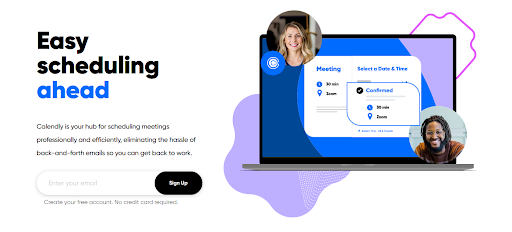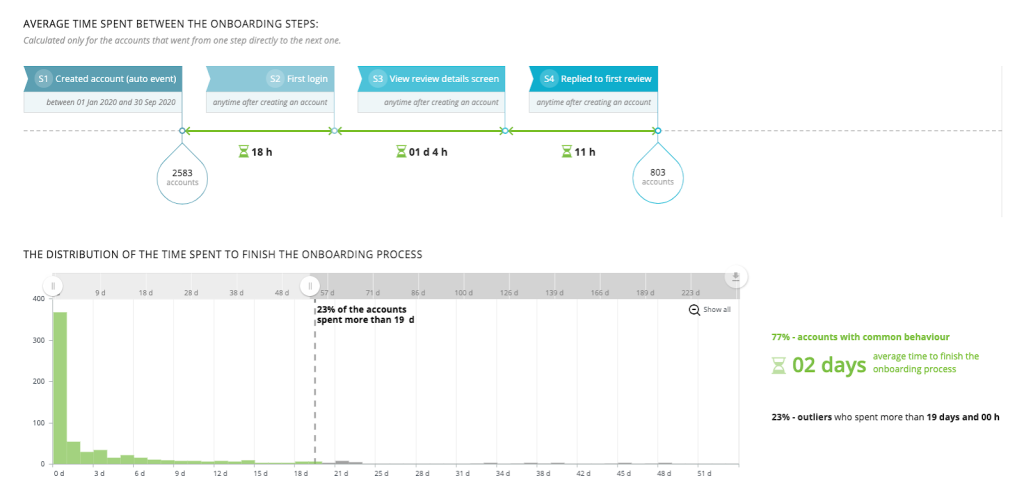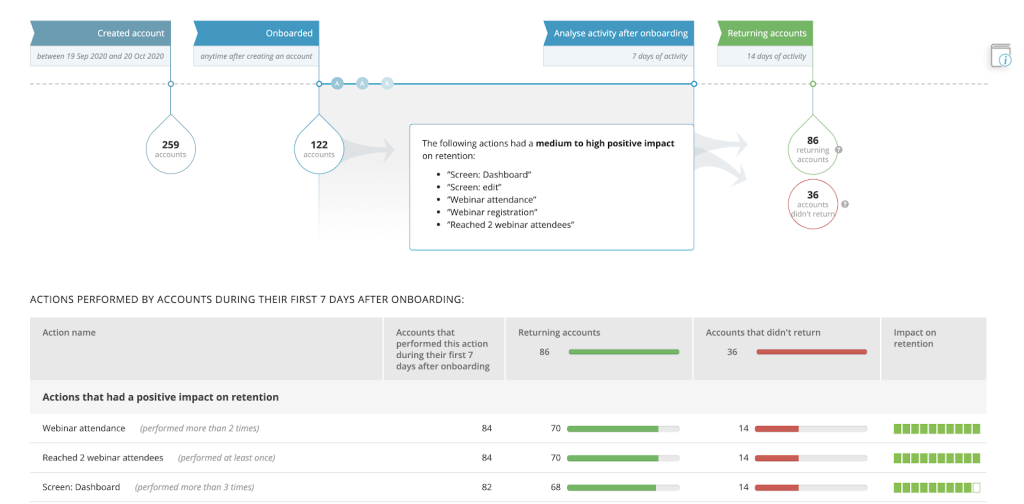The North Star Metric is one of the most important levers for growing a software company yet there is a lot of confusion and opinions surrounding it.
Today, we’re putting any confusion behind us as we break down the North Star Metric so that you feel like an expert, and are able to identify your product’s North Star Metric with ease.
Today, we’re putting any confusion behind us as we break down the North Star Metric so that you feel like an expert, and are able to identify your product’s North Star Metric with ease.
What is the North Star Metric?
The North Star Metric tracks the tipping point of your product usage that guarantees growth.
It’s the single metric that, when accomplished by a user, shows success with your product by indicating a retention rate that is greater than your current retention rate of onboarded users.
A North Star metric is the one measurement that’s most predictive of a company’s long-term success. To qualify as a “North Star,” a metric must do three things:
- Lead to revenue
- Reflect customer value
- Measure progress
When everyone in your company orients their work to this metric, your growth strategy will skyrocket. It feeds into your growth strategy in various ways:
- Team alignment. Having a definitive North Star Metric fosters alignment across the entire company. Different teams will have different sub-metrics to focus their efforts towards, but by striving to achieve a common North Star Metric, there will not be confusion as to what everyone is working towards or how they’re going about their work. Instead, a clear and concise outline of your team’s goal will be available to all for guidance.
- The customer experience comes first. Your North Star Metric is the tipping point or number that best reflects when your customers are guaranteed to experience the value of your product. Focusing on improving the customer experience from all angles will have a positive impact on revenue and retention.
- Transparency of impact. Your North Star Metric enables all team members to have a clear picture of your product’s impact. From this picture, team members can accurately assess what areas could use improvement to increase growth, and zero in on them.
- Increase user stickiness. A product’s customer stickiness refers to the likelihood that customers will come back to a product, or use it frequently. A well-designed sticky product should encourage the customer to use the product often. Your North Star Metric will help increase user stickiness because of the company-wide focus on improving the customer experience, and in turn will improve your product’s retention rates in the long run.
Additionally, The North Star Metric should always be linked to habit formation. After all, the purpose of each product is to deliver long term value, and the North Star Metric should be linked to the minimum activity people should have to perform before they create a habit of using it.
Who “Owns” the North Star Metric?
The North Star Metric is a long-term, company-wide metric that’s in front of all teams (product, marketing, development, etc.) to drive growth towards.
This being the case, everyone in your company should have a complete understanding of your North Star Metric. It will align teams’ specific KPIs to work towards the overall growth goal(s), pointing everyone in the same direction.
Also, North Star Metrics can change over time depending on your business’ trajectory. How can one know when it’s time to recalibrate? Running continued growth experiments around your top North Star Metric candidates will give your product team an excellent focus on how to grow your product and build better experiences for your users.
North Star Metric Examples
Here are a few north star metric examples you may have heard of:
Facebook’s North Star Metric (in their earlier days): 7 Friends in 10 Days Got Facebook to 1 Billion.
“Get any individual to 7 friends in 10 days. That was our keystone… that helped ramp this product to a billion users,” – Chamath Palihapitiya, Former VP of User Growth at Facebook
Slack’s North Star Metric: 2000 Messages Made Slack Sticky

“…after 2,000 messages, 93% of those customers are still using Slack today.” – Stewart Butterfield, Founder of Slack
So what about you?
Do you know your North Star Metric? It’s time to find out.
How to Define Your North Star Metric
There are a few questions you can keep in mind as you narrow down your choices for your North Star Metric:
- Is it easy to measure?
- Do you have control of this metric?
- Will it offer an objective view of your company’s performance?
- Does it have a high correlation with customer success?
- Does it lead to revenue?
- Is it reflective of your product’s core value?
- Can it measure progress?
While you’re well-equipped with this checklist, the question remains: “How do you find it?”
Traditionally, the North Star Metric was chosen by executives, and seemed to be the core driver of growth for a company. But this concept is based on assumptions rather than data.
You can use various frameworks to narrow down your choices of your North Star Metric, however we recommend finding it – and validating it – using data.
Here at InnerTrends, we view the North Star Metric as a data-driven and customer-driven metric.
You can find your North Star Metric using any analytics tool by following these guiding principles.
For this example, we’ll be using our own prooduc analytics tool, InnerTrends, to show you how you can find your product’s North Star Metric.
Step 1: Define your Core Metric
Every product has something we consider to be your Core Metric, otherwise defined as the “promise of your business”. A business has multiple core metrics, but this would be the most important one. It’s the single metric that defines what your product does at its core.
For example, Calendly and Taggg’s core metric is scheduling meetings.


Every product has a core metric. It can be surprisingly difficult to define with some products, but it is there and should be defined and agreed upon with your team. This core metric should define the event that occurs when you deliver on the promise of your business.
With this Core Metric we will begin to breakdown and discover the North Star Metric.
Step 2: Define “Onboarded”
Once you have the Core Metric that is linked to your product’s promise defined you will want all of your users to experience it.
“Onboarded” is defined as the first time a user experiences your core metric, or the promise of your business. ”
This process of user onboarding is vital to the success of your product and is also why defining what “onboarded” is as a team becomes very important.
You may ask: “But what if the first time someone accomplishes this is a test?”
This is ok. They’ve still experienced the initial value of the product.
Onboarded does not equal upgraded to paid. We need to understand the first time a user experiences the value so that we can begin to then understand how many times it takes for them to do this on an ongoing basis for a user to begin to see and feel value.
In our example with Calendly,. aA new user may schedule a test meeting for the first time. This is still what we define as “oOnboarded” for Calendly.
But that’s not enough for them to become a regular user. At this stage, they just have a clear understanding of how the product works.
The next step is for them to get into the habit of experiencing that promise on a regular basis. What we need to understand from the data is how they get there.
Step 3: Determine How Long It Takes to Become “Onboarded”
In order to further explore how to find your North Star Metric we now need to understand how long it takes for new users to become “onboarded” based on your definition above.
This is important because we will need to later analyze common conversion activities of new users after being onboarded to see what drives higher engagement.
There are many ways you can find this in different product analytics tools. With InnerTrends, there’s a pre-built report that calculates the time to onboarding automatically from your data.

Step 4: Find Common Conversion Activity
Common Conversion Activities are the actions that define the behavior of accounts that make users return to your product, or become sticky, that have a medium to a high positive impact on retention.
Here’s Claudiu Murariu, CEO of InnerTrends, with an explanation of common conversion activity. Watch the video below
The actions that occur soon after becoming onboarded will determine how sticky your product truly is and how engaged your users become.
Let’s break this down in a bit more detail.
The goal is to find the minimum common conversion activity that happens as soon as possible, but gives us a very high correlation with the decision to use the product long term.
Let’s say you have a 14 day free trial. You want to find out if something happens during the first day after onboarding that is common to all of the users that return after the trial finishes, but is not common to people that abandon your product.
All users will log in to your product, meaning that logging in is a common activity for all users, not only the ones that convert into paid.
But if you discover that all of the people that convert to paid performed a specific action a minimum number of times during that first day while the ones that churn don’t share that activity in common, that’s the common conversion activity you are looking for.
InnerTrends has another one-click report for this:

In this report you will find specific actions that have a high impact on retention that relate to returning accounts, i.e. those that came back within our 14-day period of analysis.
This is important because we want to leverage the core events that are part of the top three common conversion activities that have a high impact on retention to determine our potential North Star Metric. In the screenshot above, it would be webinar attendance.
It’s important to note that the common conversion activity, from what we’ve seen in hundreds of data sets, is always considered to be a few events that have a significant impact on retention. For most companies, it’s 3 to 5 events.
Step 5: Determine Your North Star Metric
With the information above we now have the ability to determine a data-backed metric that will guarantee to increase our retention and, in turn, helps the company grow in all aspects, such as increased LTV (Customer Lifetime Value), reduced churn, ability for more expansion revenue etc.
So how do we define it?
We look at the common conversion activity and extract the core metrics out of it, so it’s: Core Event that is part of the Common Conversion Activity in a specific Time Frame.
Note that the time frame is extremely important as you must analyze this metric cohort-based to be effective.
So for a meeting scheduling tool an example could breakdown like this:
- Core Metric = Schedule Meeting
- Onboarded = Scheduled First Meeting
- Average Time it Takes to be Onboarded = 3 hours
- Common Conversion Activity = Schedule three meetings in the first 7 days
- North Star Metric = Schedule three meetings within 7 days after onboarding
Let’s look at our checklist and see how this North Star Metric stacks up:
- Is it easy to measure?
Yes, tracking each time a meeting is scheduled will probably be one of the easiest things to track for this product. - Do you have control of this metric?Everything in this product is already designed to get people to schedule meetings. All you have to do is optimize towards this goal, especially since you can easily monitor how many of your new onboarded accounts reach it.
- Will it offer an objective view of your company’s performance?When it comes to value generated to your users, the company performance is measured by how many people choose the tool to schedule meetings. As the NSM is directly linked to how many people create a habit of scheduling meetings using the tool, we’d say this item passes 100%.
- Does it have a high correlation with customer success?The metric is generated by analyzing the users that are successful with scheduling meetings, so the correlation is guaranteed.
- Does it lead to revenue? Once you measure how many people schedule three meetings in 7 days, it should be easy to measure how many of them upgrade to paid later.
You should also check how many of the people that upgraded to paid reached this metric before the upgrade. A high percentage tells you how important the metric is to the upgrade. The correlation between NSM and upgrades is usually very high, and it’s difficult to find a better metric closer to the moment of onboarding with higher correlation. - Is it reflective of your product’s core value? The product is all about scheduling meetings. The NSM just tells us how many need to be scheduled for people to start loving your product.
- Can it measure progress? When the number of people scheduling three meetings in their first week goes up, you can be sure that your business performance goes up.
